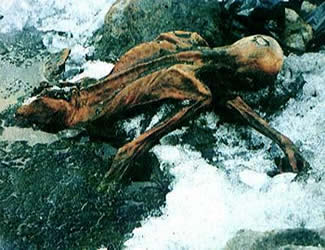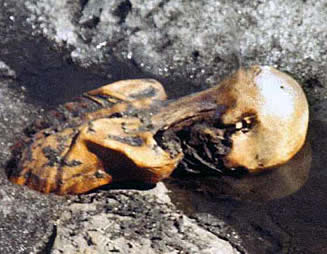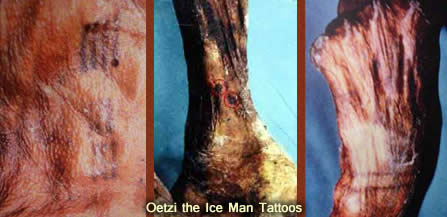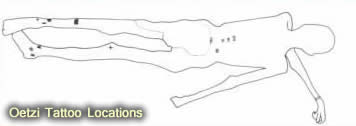Oetzi the Iceman MummyOetzi the Iceman (also spelled Otzi and known also as Frozen Fritz) is the modern nickname of a well-preserved natural mummy of a man from about 3300 BC, found in 1991 in a glacier of the Otztal Alps, near the border between Austria and Italy. The nickname comes from the valley of discovery. He rivals the Egyptian "Ginger" as the oldest known human mummy, and has offered an unprecedented view on the habits of Chalcolithic (Copper Age) Europeans.


Some of his tattoos were located as follows:
Four groups of lines to the left of the lumbar spine; one group of lines to
the right of the lumbar spine; a cruciform mark on the inside of the right knee;
three groups of lines on the left calf; a small cruciform mark on the left of
the left Achilles tendon; a group of lines on the back of the right foot; a
group of lines next to the right outer ankle; a group of lines above the right
inner ankle.

Oetzi had 57 tattoos, some of which were located on or near acupuncture
points that coincide with the modern points that would be used to treat symptoms
of diseases that he seems to have suffered from, such as digestive parasites and
osteoarthrosis. Some scientists believe that these tattoos may indicate an early
type of acupuncture.

<< BACK
